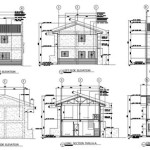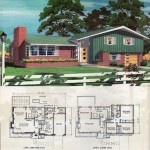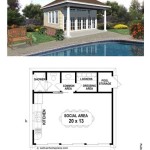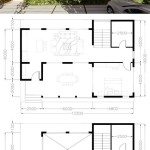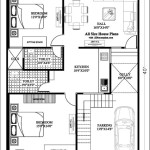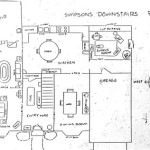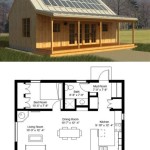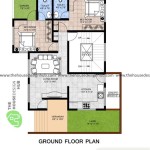Carriage Home Plans & Designs
Carriage homes, also known as carriage houses or coach houses, offer a unique blend of charm and practicality. Historically used to house horse-drawn carriages and their drivers, these structures have evolved into versatile living spaces, serving as guest houses, rental units, or even primary residences. Careful planning is essential to maximize their functionality and aesthetic appeal. This article explores key considerations in carriage home plans and designs.
Size and Footprint
Determining the appropriate size and footprint is a crucial first step. The intended use significantly influences these dimensions. A carriage home designed as a guest suite will have different space requirements than one serving as a primary dwelling. Local zoning ordinances and building codes also play a role, dictating allowable heights, setbacks, and lot coverage. The available lot space naturally limits the maximum footprint of the structure.
Architectural Style
The architectural style of the carriage home should complement the main house and its surroundings. A harmonious aesthetic enhances the overall property value. Popular choices include: *
Traditional:
Mimicking the original purpose with classic carriage doors and gabled roofs. *Modern:
Incorporating clean lines, large windows, and contemporary materials. *Craftsman:
Featuring handcrafted details, exposed beams, and natural materials. *Farmhouse:
Emphasizing rustic charm with board-and-batten siding and simple rooflines. *Mediterranean:
Utilizing stucco walls, arched doorways, and tile roofs.Floor Plans and Layout
Efficient space planning is paramount, especially in smaller carriage homes. Open-concept layouts can create a sense of spaciousness. Careful consideration should be given to the placement of: *
Living areas:
Optimizing natural light and flow. *Kitchen:
Designing an efficient and functional workspace. *Bedroom(s):
Ensuring adequate privacy and comfort. *Bathroom(s):
Maximizing functionality in a limited space. *Storage:
Incorporating ample storage solutions to avoid clutter.Exterior Finishes
Exterior finishes contribute significantly to the carriage home's curb appeal and durability. Material selection should reflect the chosen architectural style and the local climate. Options include: *
Siding:
Wood, vinyl, fiber cement, or brick veneer. *Roofing:
Asphalt shingles, metal roofing, or tile. *Windows and doors:
Energy-efficient options are recommended. *Trim and accents:
Adding decorative elements to enhance the design.Interior Finishes
Interior finishes establish the character and ambiance of the carriage home. These choices should align with the intended use and the overall design aesthetic. Key considerations include: *
Flooring:
Hardwood, tile, laminate, or carpet. *Wall finishes:
Paint, wallpaper, or paneling. *Cabinets and countertops:
Selecting durable and stylish materials. *Lighting:
Incorporating a mix of ambient, task, and accent lighting. *Plumbing fixtures:
Choosing fixtures that complement the overall design.Utilities and Systems
Careful planning of utility connections and systems is essential. Options for connecting to existing utilities in the main house should be explored. Key systems to consider include: *
Electrical:
Ensuring adequate power supply for all appliances and lighting. *Plumbing:
Connecting to water and sewer lines. *Heating and cooling:
Installing an efficient HVAC system. *Ventilation:
Providing adequate airflow to prevent moisture buildup.Parking and Access
Access to the carriage home and parking provisions are important logistical aspects. The design should incorporate: *
Driveway:
Ensuring adequate space for vehicles to maneuver. *Parking area:
Providing designated parking spots for residents and guests. *Walkways:
Creating safe and accessible pathways to the entrance. *Landscaping:
Using landscaping to enhance the overall aesthetic and functionality.Budget and Timeline
Establishing a realistic budget and timeline is crucial for a successful project. Factors influencing the overall cost include: *
Size and complexity of the design:
Larger and more complex designs typically cost more. *Material selections:
High-end finishes increase the overall budget. *Labor costs:
Local labor rates can vary significantly. *Site preparation:
The extent of site work required can impact the timeline and budget.Regulations and Permits
Compliance with local zoning ordinances and building codes is mandatory. Obtaining the necessary permits before construction begins is essential. Key regulations to consider include: *
Height restrictions:
Maximum allowable height of the structure. *Setback requirements:
Minimum distance from property lines. *Lot coverage:
Maximum percentage of the lot that can be covered by structures. *Parking regulations:
Number of required parking spaces. *Accessibility requirements:
Ensuring the structure meets accessibility standards.
Plan 14653rk Carriage House With Man Cave Potential Garage Guest Plans

Carriage House Plans Craftsman Plan Design 035g 0003 At Www Thehouseplan Com

Purcell Timber Frames The Carriage House Full Home Package Plans Garage Design Craftsman

Carriage House Plans Craftsman Style Plan With 2 Car Garage Design 051g 0020 At Thehouseplan Com

Plan 40823 Modern Carriage House Home Design

Carriage House Design Drafting Services Adaptive

Carriage House Plans Craftsman Style Plan With 3 Car Garage Design 051g 0077 At Thehouseplan Com

Beautiful Carriage House Plans Garage Apartment W Photos

Carriage House Plans Craftsman Style Garage Apartment Plan With 2 Car Design 051g 0069 At Thehouseplan Com

Plan 006g 0094 The House

